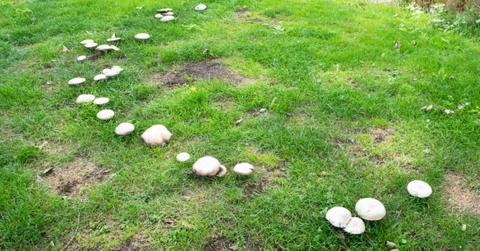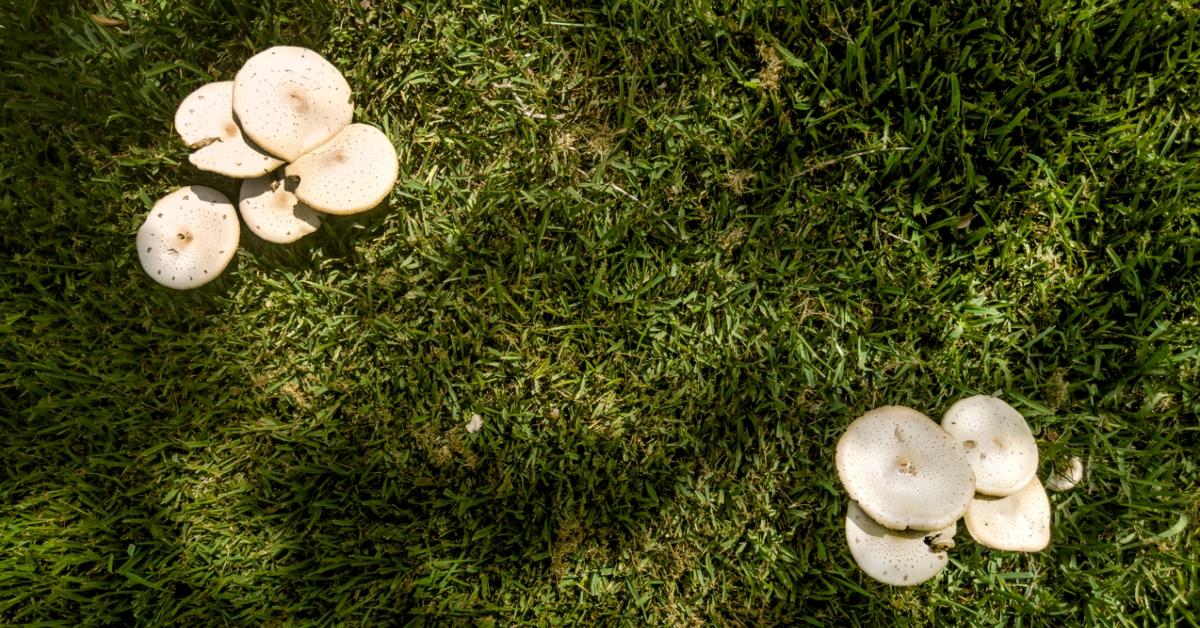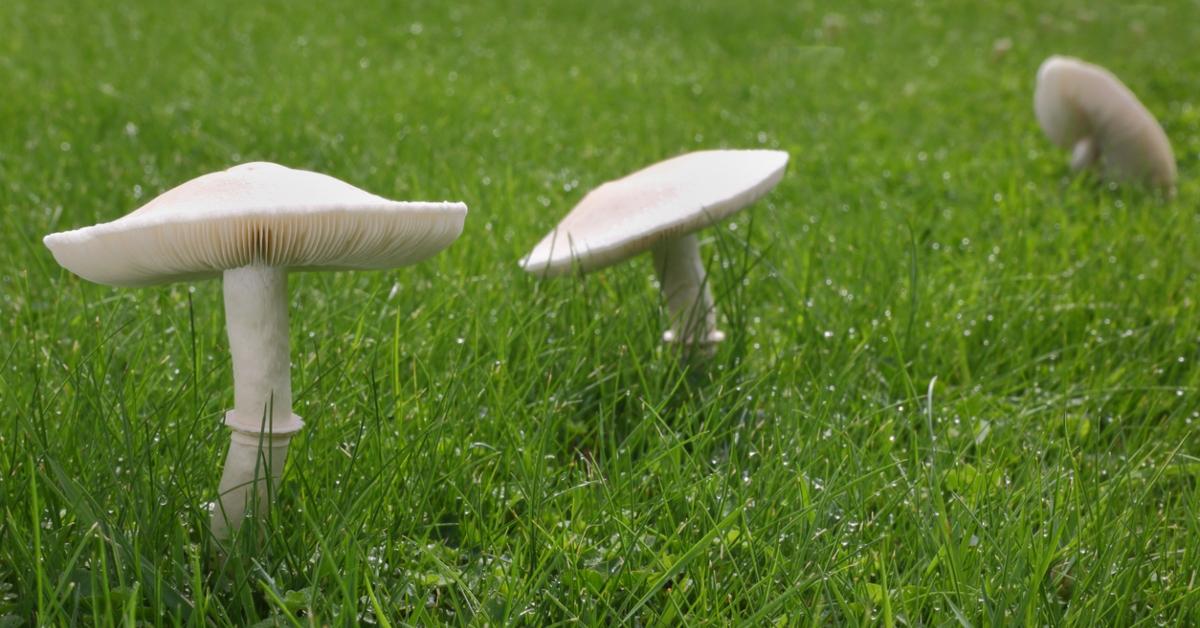Here’s How to Get Rid of Those Mushroom Circles in Your Lawn — for Good
Have you been dealing with mushroom circles in your lawn? Here’s why they keep showing up, and what you can do to make sure they never come back.
Published April 24 2024, 10:33 a.m. ET

Mushroom clusters can show up out of nowhere and spread quickly, which can be frustrating if you've worked hard to maintain a beautiful green lawn. While some people regard them as a good omen and call them "fairy rings," not every lawn owner is so optimistic. Luckily, mushrooms likely won't do any harm. They are more likely to provide some soil benefits.
In any case, white mushroom circles might not be the aesthetic that everyone is going for, so it’s okay to find ways to get rid of them. There are some ways you can prevent mushrooms from showing up in the first place. So, here’s how to get rid of mushrooms in your lawn.

How to get rid of mushrooms in your lawn:
Removing mushrooms from your lawn requires digging up the entire fungi with a shovel and putting the mushrooms in a plastic bag so that the spores do not spread. Yet, this is a temporary solution because the fungi spread through the release of spores, so you cannot entirely prevent more mushrooms from growing and spores from spreading underground.
However, removing the entire fungi (not just the cap) will at least likely prevent the amount of mushrooms you will be dealing with, per The Spruce. Here are some options if you are looking for a more long-term solution to get mushrooms out of your lawn.
Make your own fungicide.
If you’ve removed the mushrooms, you can apply fungicide to your lawn to prevent them from growing again, per Scotts.com. You do not have to buy chemical-filled fungicides from the store, and you can make your own using these three easy recipes from ingredients you probably already have at home.
For the first recipe, you need only mix five tablespoons of vinegar for every gallon of water and spray it on your yard.
Another option is just a few squirts of dish soap in the affected areas, per Scotts.
According to Lawn.com, baking soda and water will also work well as a fungicide. Mix two tablespoons of baking soda with one liter of water (or 33 ounces) and spread the mixture over your yard.
Reduce shady patches.
Mushrooms grow in damp and dark conditions, so if your yard is heavily shaded, it might be harder to keep them from growing. Consider pruning some of the trees above your yard and any surrounding flora that may contribute to a lack of sunlight, per The Spruce.

Reduce organic or decaying matter on your lawn.
As you probably learned in school, mushrooms are decomposers and usually grow to break down organic matter. Regularly picking up fallen branches, leaves, and any other organic material that could end up in your yard can help prevent mushrooms from showing up, per Lawn.com.
Check your draining system.
According to The Spruce, mushroom growth can indicate lawn drainage issues. If your soil is too wet, you may want to see if your gutters are clogged or if something is blocking rainwater drainage, such as a sidewalk. Making sure your gutters are cleaned regularly, changing the direction of your downspout, and even using rain barrels are all possible solutions.